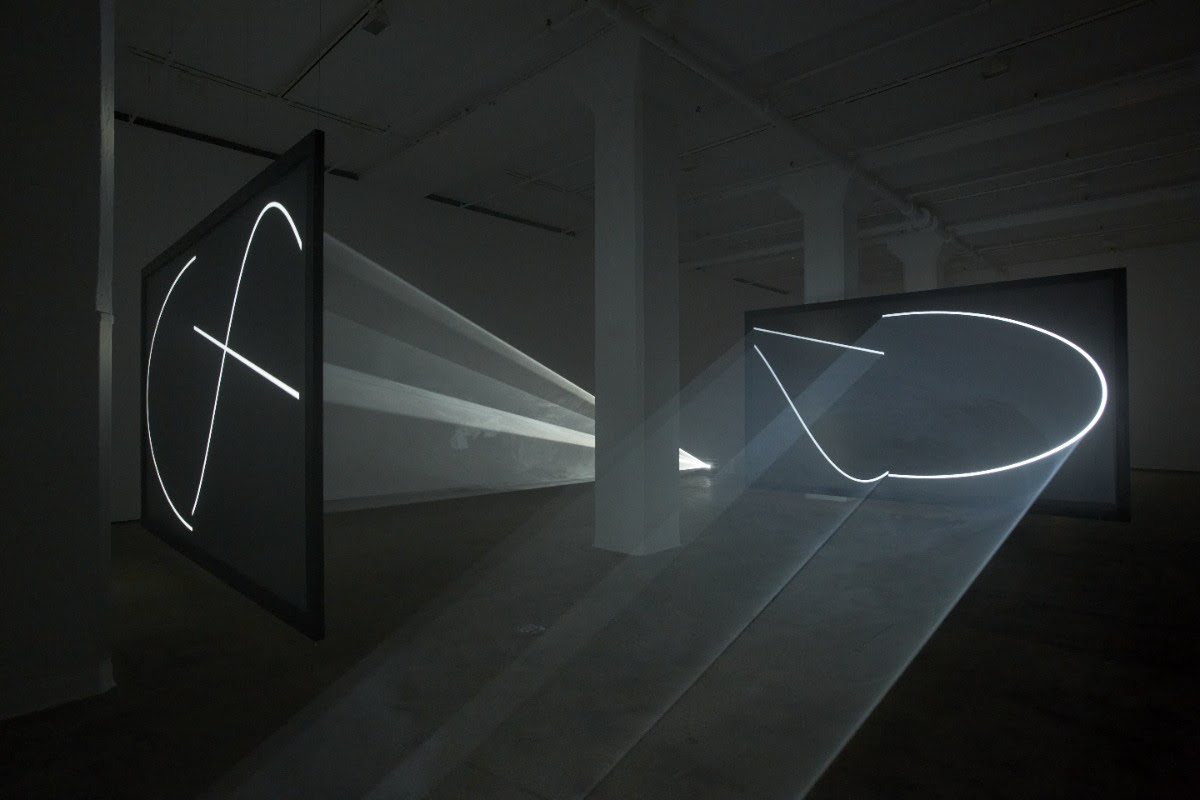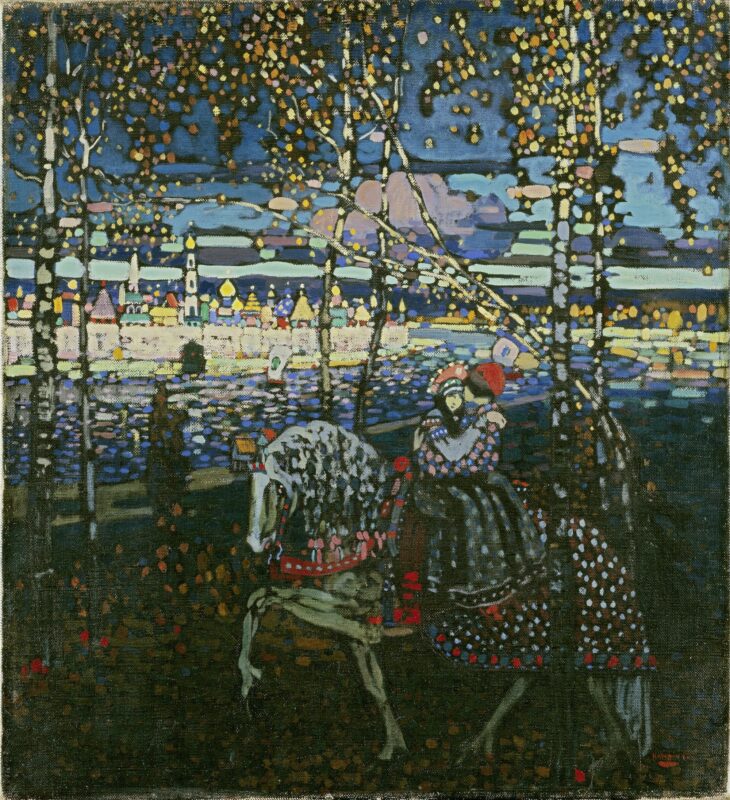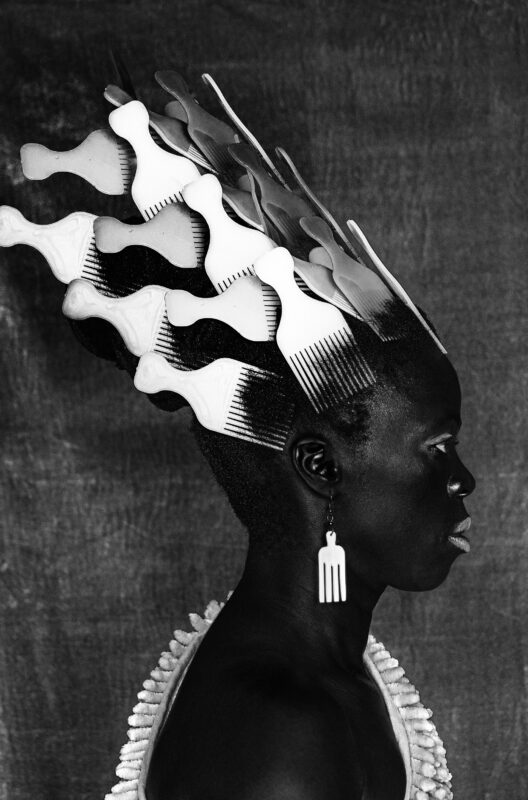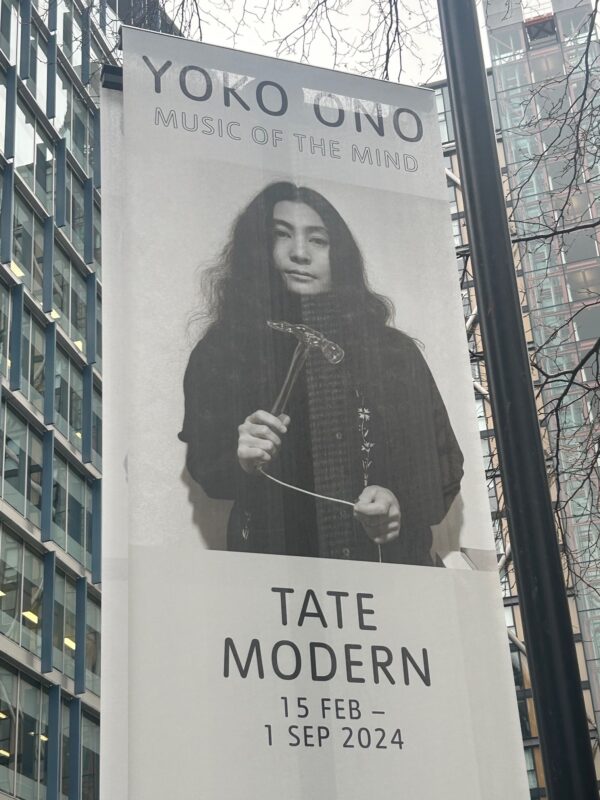
This summer, Tate Modern will present an exhibition of ‘solid light’ installations by British-born, US-based artist Anthony McCall (b. 1946). An early pioneer of experimental cinema and installation art, McCall is known for his material film installations where projected light is visibly enhanced using a thin mist to produce solid light forms, bringing together film, sculpture, and drawing. Visitors will be invited to interact with each of the four solid light works, offering an unforgettable immersive encounter. The exhibition will also include film, photography and archive material documenting McCall’s extraordinary practice.
McCall’s practice developed during his early career in the early 1970s when he was involved in London’s independent film community. Tate Modern’s exhibition will feature photographs and film footage of the artist’s earliest performances, including the significant Landscape for Fire 1972, which depicts a carefully choreographed sequence performed outdoors: uniformed participants from the art collective Exit light fires in a geometric grid formation against a soundtrack of foghorns, wind, and burning. Contrasting the unpredictability of nature with mathematical order, the work speaks to McCall’s developing conceptual interest in shape and movement. The exhibition will also include early works like Room with Altered Window 1973, demonstrating the artist’s increasing interest in light and architectural interventions.
In 1973, McCall moved to New York and began exploring the boundaries between sculpture and film. Inspired by the shaft of light that radiated from film projectors, he developed an idea which would invert the rules of cinema: inviting the audience to turn around and face the source of the light rather than the screen. This led to the conception of the first of McCall’s solid light works: Line Describing a Cone 1973. The work, which was acquired by Tate in 2005, will be the first solid light work visitors will encounter in this exhibition. Created using a film projector and 16-millimetre film, the work begins with a thin pencil of light shone onto a wall. Across 30 minutes, the outline of a circle is slowly ‘drawn’ on the wall, casting a cone of light from the projector through the space. Although deceptively simple, this work considers the nature of film itself: focusing on the shape of light, not just the traces it casts. Included in the exhibition are sketches and photographs of McCall’s original plans for this work.
Towards the end of the 1970s, McCall withdrew from making art and was not to return to his practice until the dawn of the new millennium, attracted by the artistic potential that emerging technology promised. Haze machines could improve visibility of the works by adding mist to the air, giving solid light works a more tactile quality, whilst digital projectors offered new possibilities: no-longer tied to the 4:3 aspect ratio of analogue projectors, McCall was able to realise more complicated forms, experimenting with ‘travelling waves’ to transform pockets of space inside the solid light works. Shown in the exhibition will be the ambitious Doubling Back 2003, McCall’s first work to reimagine the solid light concept for the 21st century. Face to Face 2013 sees the possibilities developed further; its projected forms interlock, allowing the viewer to paradoxically look towards the projector and a screen to see the footprint of the form they are within.
The exhibition will culminate with one of the artist’s latest works, Split-Second Mirror, 2018. Using a mirror to interrupt a plane of light, the work is perhaps McCall’s most visually complex to date, continuing to push the possibilities of reinterpreting sculptural space using cinematic devices.
Curated by Gregor Muir, Director of Collection, International Art, Tate Modern and Andrew de Brún, Assistant Curator, International Art, Tate Modern.
Anthony McCall: Solid Light, 27th June 2024 – 27th April 2025, Tate Modern
About the Artist
Anthony McCall (b. 1946) lives and works in New York. His solo exhibitions include Solid Light Works (2018) at The Hepworth Wakefield, Wakefield; Five Minutes of Pure Sculpture (2012) at Hamburger Bahnhof – Nationalgaleie der Gegenwart; Nu/Now: Anthony McCall (2009) at Moderna Museet, Stockholm; Anthony McCall (2007-2008) at Serpentine Gallery, London; and Anthony McCall: Films de Lumière Solide (2004) at Centre Pompidou/La Maison Rouge, Foundation Antoine de Galbert, Paris.
McCall’s work has also featured in group exhibitions including Dreamlands: Immersive Cinema and Art, 1905-2016 (2016-17) Whitney Museum, New York; About Time: Photography in a Moment of Change (2016) SFMOMA, San Francisco; Light Show (2013) Hayward Gallery, London; Fifteen Weeks of Art in Action (2012) Tate Modern, London; and On Line: Drawing Through the Twentieth Century (2010-11) MOMA, New York.
McCall’s works are in the collections of Museum of Modern Art, New York; Musée National d’Art Moderne, Centre Pompidou, Paris; Whitney Museum of American Art, New York; Museu d’Art Contemporani de Barcelona, Spain; Auckland Art Gallery Toi O Tamaki, New Zealand; and Museum für Moderne Kunst, Frankfurt.









